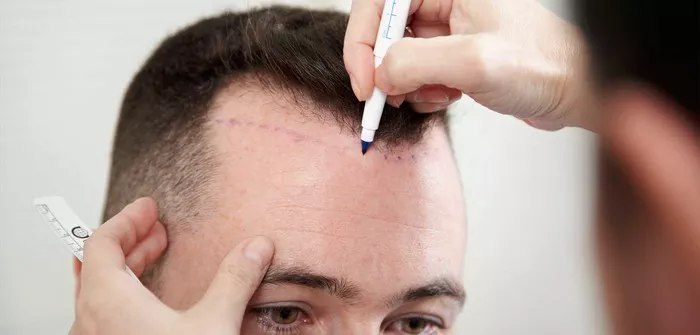The world of hair transplant surgery has evolved significantly in recent years, offering individuals a range of advanced techniques to combat hair loss. Among these techniques, Follicular Unit Extraction (FUE) and Direct Hair Implantation (DHI) stand out as two of the most prominent options. In this comparative analysis, we delve into the differences between FUE and DHI hair transplants to help you make an informed choice.
1. Extraction Process: Precision vs. Immediate Implantation
The fundamental difference between FUE and DHI lies in the extraction and implantation process.
FUE (Follicular Unit Extraction): FUE involves the extraction of individual hair follicles from the donor area using a small circular punch. These follicles are then prepared for transplantation. Once the required number of follicles is extracted, they are implanted into the recipient area.
DHI (Direct Hair Implantation): DHI streamlines the process by combining extraction and implantation in a single step. Hair follicles are extracted using specialized tools and immediately implanted using a Choi Implanter Pen. This immediate placement is believed to enhance graft survival rates.
2. Implantation Control: Precision vs. Density
The manner in which hair follicles are implanted also sets FUE and DHI apart.
FUE: In FUE, extracted follicles are stored temporarily before implantation. This allows the surgeon to design and plan the implantation process. The angle, direction, and depth of each follicle can be carefully customized to achieve a natural appearance.
DHI: DHI’s unique feature is its Choi Implanter Pen, which enables precise control over the depth and angle of implantation. This tool is particularly advantageous for creating natural hairlines and achieving high density in smaller areas.
3. Recovery Time and Scarring: Minimal vs. Virtually Invisible
Both FUE and DHI are designed to minimize scarring and hasten recovery, but there are subtle distinctions.
FUE: FUE is known for its minimal scarring, as it involves extracting individual follicles rather than a strip of scalp. The small circular scars left behind typically heal and become nearly imperceptible over time. Recovery time is relatively quick, with most patients able to resume regular activities within a few days.
DHI: DHI’s immediate implantation approach is associated with minimal trauma to follicles, potentially contributing to better graft survival. The smaller incisions made for implantation also lead to quicker healing and less visible scarring compared to older techniques.
4. Hair Density and Natural Look: Considerations for Outcome
Achieving a natural look and optimal hair density is a common goal in hair transplantation.
FUE: FUE’s meticulous customization during implantation allows for careful placement of follicles, resulting in a natural and even distribution of hair. This technique is well-suited for patients seeking a balanced and aesthetically pleasing outcome.
DHI: DHI’s immediate implantation may contribute to achieving higher hair density in smaller areas, making it ideal for individuals with specific bald patches or areas of thinning. The Choi Implanter Pen’s precise control over placement enhances the natural appearance.
5. Procedure Time and Cost: Speed vs. Efficiency
The duration of the procedure and associated costs can also influence the choice between FUE and DHI.
FUE: The extraction and implantation processes in FUE are separate, potentially leading to longer procedure times, especially for larger sessions. However, this technique’s meticulous approach often yields highly satisfactory results.
DHI: DHI’s immediate implantation approach can expedite the procedure by combining extraction and implantation. This efficiency can be particularly advantageous for patients with time constraints. However, DHI’s advanced tools and technique may be associated with slightly higher costs.
See Also: Can Anyone Have a Hair Transplant: Things You Need To Know
Conclusion
In the FUE vs. DHI debate, both techniques offer innovative solutions for hair loss. The choice between them depends on factors such as your desired outcome, hair density goals, and individual preferences. Consulting with a skilled hair transplant professional is essential to determine which technique aligns best with your unique needs and expectations. Whether you opt for the precision of FUE or the density-focused approach of DHI, modern hair transplant techniques offer effective and natural-looking solutions to restore your confidence and appearance.


